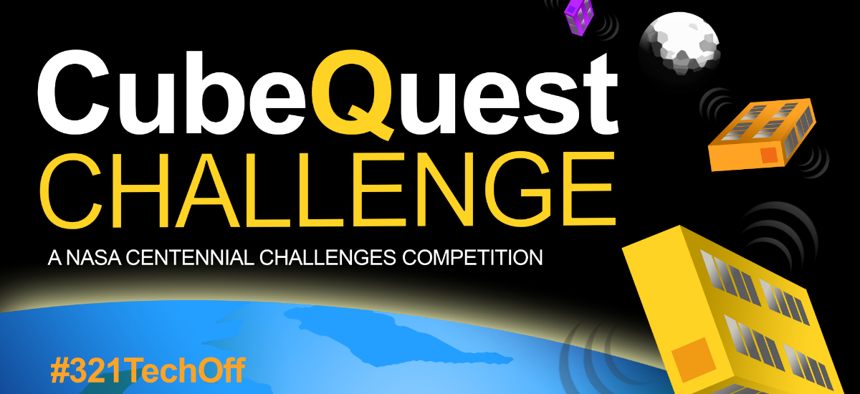Teams in NASA’s Latest Challenge Compete to Have Their Inventions Sent into Space

NASA
NASA has completed the first round of its first space-based competition.
NASA plans to take a giant step out of Earth’s orbit for a newly launched deep space competition, the Cube Quest Challenge.
The competition is the agency’s first in-space challenge, according to a recent NASA press release. After preliminary rounds on Earth, participants could be awarded the chance at a secondary payload spot on the Orion spacecraft’s first mission.
In past challenges, the agency used Earth-bound simulations to conduct these types of outer space-based tests, said Eric Eberly, deputy program manager for Centennial Challenges at NASA's Marshall Space Flight Center.
“The best way to prove communications and propulsion for deep space is to go there,” he said in an email to Nextgov.
The Cube Quest Challenge is also expected to hit another major milestone. The $5.5 million prize purse attached to the competition is the agency’s largest, according to a NASA press release.
The competition is centered on advancing small spacecraft deep space exploration. Participants have been tasked with designing small satellites equipped to send communications as they travel near and beyond the moon, according to NASA.
NASA recently announced the results of the Cube Quest Challenge’s first ground-tournament round. The teams awarded the top five scores came from across the country, including two from Florida.
NASA began designing the challenge in 2013 when an agency team recognized the importance of advancing CubeSat communications -- which refers to small satellites designed for space research -- so they're practical for deep space missions, Eberly said.
“At that time, CubeSat communications had been limited to low-bandwidth data communications in Near Earth Orbit,” he said.
The competition includes three stages: ground tournaments, Deep Space Derby, which will focus on small spacecraft communication in deep space, and Lunar Derby, which will focus on small spacecraft propulsion and communication when positioned closer to Earth.
Each of the four ground tournaments will be spaced about five months apart. The next round will take place in February, but each team can choose which one to participate in.
The competition is part of the agency’s Centennial Challenges Program, which is designed to fast-track technological innovation through competitions.
NEXT STORY: NASA Creates New 'Self-Healing' Material





